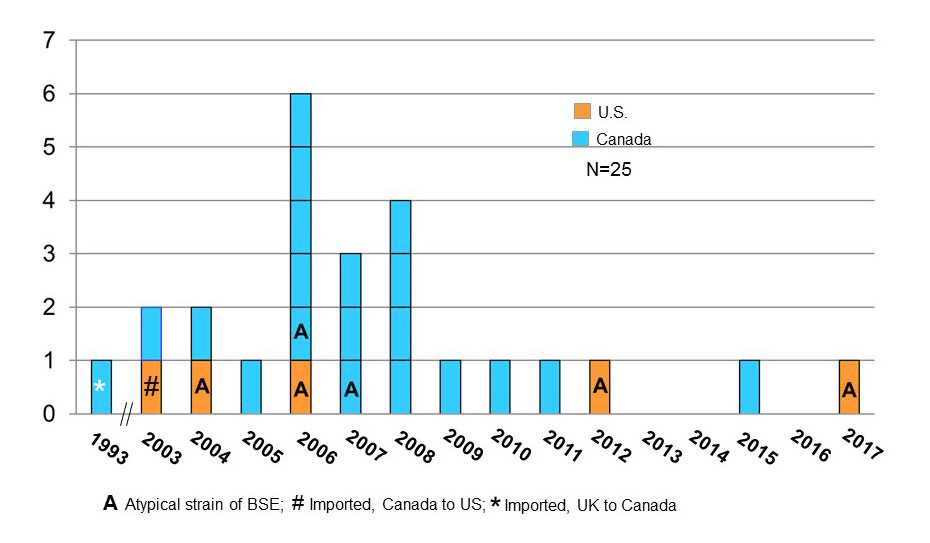BSE in North America
Through July 2017, BSE surveillance has identified 25 cases in North America: 5 BSE cases in the United States and 20 in Canada. Of the 5 cases identified in the United States, one was born in Canada; of the 20 cases identified in Canada, one was imported from the United Kingdom (see graph below).
BSE Cases in North America by Year and Country of Death from 1993 to July 2017

This figure illustrates the 25 BSE cases identified in North America, of which 6 were the atypical BSE cases and 19 were classic BSE cases. The only classic BSE case identified in the United States was imported from Canada.
New Case of BSE Detected in United States
On July 18, 2017, the U.S. Department of Agriculture (USDA) announced the confirmation of the fifth case of bovine spongiform encephalopathy (BSE) in an 11-year-old cow in Alabama. See the USDA notice.
Cases Identified in the United States
There have been five cases of BSE identified in the United States: Alabama (2), California (1), Texas (1), and Washington (1).
Strong evidence indicates that classic BSE has been transmitted to people primarily in the United Kingdom, causing a variant form of Creutzfeldt-Jakob disease (vCJD). In the United Kingdom, where over 1 million cattle may have been infected with classic BSE, a substantial species barrier appears to protect people from widespread illness. Since vCJD was first reported in 1996, a total of only 227 patients with this disease have been reported worldwide. The risk to human health from BSE in the United States is extremely low..
- Page last reviewed: August 9, 2017
- Page last updated: August 9, 2017
- Content source:


 ShareCompartir
ShareCompartir